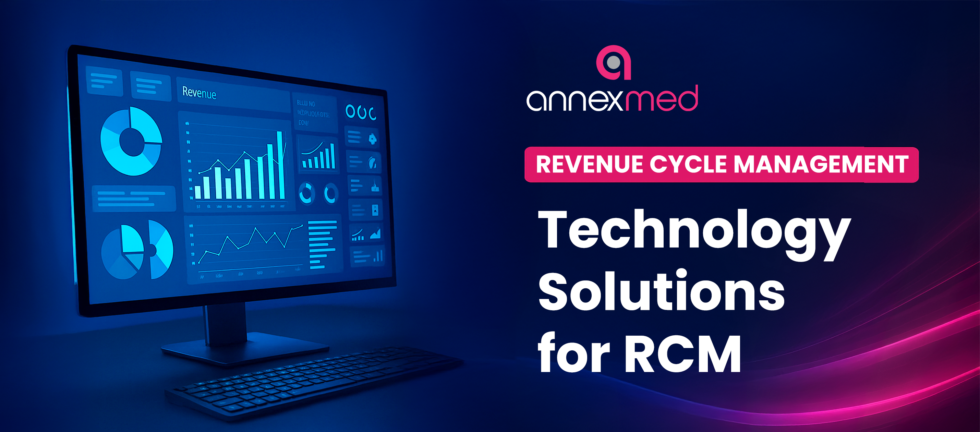Technology has quietly become the strongest teammate in modern revenue cycle management. While people still make the judgment calls, automation and analytics now handle much of the heavy lifting, from eligibility to denial prediction, giving billing teams more time to focus on problem-solving instead of paperwork.
As payers tighten reimbursement policies and claim volumes rise, RCM leaders in 2026 are asking the same question: Which technologies actually improve cash flow, not just add another dashboard?
Many healthcare organizations get stuck and say that their revenue cycle is broken, but in reality, it’s overworked. The complexity of today’s payer rules, coupled with rising patient responsibility, means even the best billers spend too much time on tasks that technology could handle better.
According to the Advisory Board Study, U.S. hospitals lose an average of $22 million annually due to inefficient billing operations and manual workflows. Over 65% of AR delays are traced back to incomplete or inconsistent data entry, the exact kind of error automation can prevent.
The goal isn’t to replace people. It’s to free them up. When technology handles medical billing and Coding, your teams can focus on denial root causes, payer relationships, and compliance.
Table of Contents
- 1. Automation & RPA in Billing Operations
- 2. AI-Powered Denial Management and Prediction
- 3. Advanced Analytics and Revenue Intelligence Dashboards
- 4. EHR and Clearinghouse Integrations
- 5. Patient-Financial Engagement Tools
- The Future of RCM Technology in 2026 and Beyond
- Choosing the Right Technology Partner
1. Automation & RPA in Billing Operations
Why it matters: Automation and robotic process automation (RPA) are now essential in RCM. Instead of spending hours rekeying claims, bots can handle repetitive, rule-based tasks, eligibility verification, charge entry, payment posting, and claim scrubbing, in minutes.
Impact: Up to 40% reduction in manual data entry time (HFMA 2025 Benchmark). 25–30% faster claim turnaround for organizations with automated charge capture and EHR-to-clearinghouse sync.
Best use cases: Eligibility & benefits verification, Claims validation and status checks, ERA/EOB payment posting, Batch re-submission for denied claims.
AnnexMed insight: Automation only works if your rules engine reflects current payer logic. Regular updates and human QA reviews keep automation from becoming “auto-error.”
2. AI-Powered Denial Management and Prediction
Why it matters: Traditional denial management looks backward, AI turns it forward. By analyzing historical claims, payer policies, and denial reason codes, AI can flag high-risk claims before submission.
Impact: 35–50% reduction in preventable denials with predictive AI (Becker’s Hospital Review, 2025). Machine learning tools can identify over 80% of recurring denial patterns, such as coding mismatches or missing documentation.
Best use cases: Denial prediction based on payer history, Automated appeal draft generation, Root cause mapping by provider or region, Continuous learning on new payer edits.
AnnexMed insight: AI doesn’t just speed up billing, it strengthens payer negotiation. When you know why a payer denies claims, you can build cleaner contracts and smarter pre-bill edits.
3. Advanced Analytics and Revenue Intelligence Dashboards
Why it matters: RCM analytics used to mean AR reports in Excel. In 2026, it means real-time visibility into everything, from claim velocity to denial trends, through dashboards powered by platforms like Power BI, Tableau, or proprietary tools.
Impact: Organizations using advanced analytics report 18% higher clean-claim rates (HFMA, 2025). Revenue leakage detection improves by up to 27% when data is unified across patient access, coding, and billing.
Best use cases: AR aging and collection performance, Payer trend and denial frequency tracking, Staff productivity and worklist analysis, Reimbursement forecasting and budgeting.
AnnexMed insight: The power of analytics isn’t in pretty charts, it’s in what gets fixed because of them. Dashboards must trigger action: a follow-up call, a claim correction, or a workflow change.
4. EHR and Clearinghouse Integrations
Why it matters: Even the best billing team can’t fix disconnected systems. If your EHR, clearinghouse, and billing software don’t “talk,” errors multiply. Integrations based on FHIR and HL7 standards now allow cleaner claim transmission, automatic status updates, and faster payment cycles.
Impact: Integrated systems reduce duplicate data entry by 70% (MGMA 2025). Practices report 20% faster payment cycles when clearinghouse updates flow directly into their billing system.
Best use cases: Eligibility and claim status automation, Real-time error correction, EOB posting synchronization, Seamless patient payment tracking
AnnexMed insight: Interoperability isn’t just a tech upgrade, it’s risk reduction. Integrated systems leave less room for human misentry and more room for insight.
5. Patient-Financial Engagement Tools
Why it matters: Patient responsibility now accounts for over 30% of provider revenue. When patients understand their costs and can pay easily, collection rates rise and AR days fall.
Impact: Providers using digital cost estimators collect 38% more upfront payments. Practices using text reminders and online payment options see AR days drop by 12–15%.
Best use cases: Automated cost estimates and price transparency, Digital payment links via text or portal, Patient-friendly statements, Real-time eligibility checks before scheduling
AnnexMed insight: Patient engagement isn’t just front-office tech, it’s the last mile of revenue integrity. Every payment you collect upfront is one less claim you have to chase later.
The Future of RCM Technology in 2026 and Beyond
The next generation of revenue cycle tools will go beyond automation. Expect AI-assisted coding, natural language-driven prior authorizations, and predictive AR workflows that flag accounts at risk of aging past 90 days.
The Centers for Medicare & Medicaid Services (CMS) is also expanding its FHIR interoperability mandates by 2026, meaning data between payers, EHRs, and RCM vendors will become even more standardized, reducing claim friction.
In short, RCM technology is shifting from reactive billing to predictive financial management.
Choosing the Right Technology Partner
Buying technology is easy; making it work is harder. The right RCM technology partner should offer:
- Integration-first architecture (EHR, clearinghouse, payer)
- Compliance alignment with HIPAA and CMS audit requirements.
- Customization flexibility to match your workflow.
- Analytics transparency you should always see the same data your vendor sees.
Beware of “one-size-fits-all” RCM software. The most effective solutions blend automation with human oversight, technology handles the volume, people handle the nuance.
Build a Smarter Revenue Cycle with AnnexMed
Smart technology doesn’t replace experience,it enhances it.By combining automation, AI, analytics, and patient-focused tools, Our RCM Services reduces friction, accelerates reimbursement, and let you stay compliant as payer rules evolve.


























